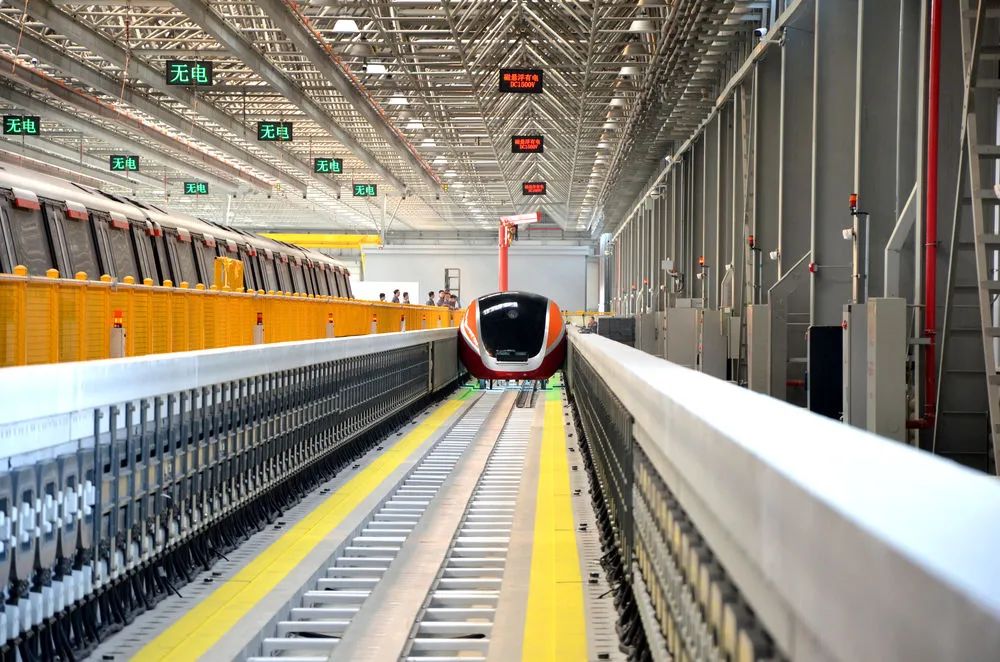
Photo?shows?China's first high-temperature superconducting electric levitation system.?(COURTESY?PHOTO)
By?Staff?Reporters
China's first high-temperature superconducting electric levitation system completed its first trial operation in Changchun, northeast China's Jilin province on March 31.
Adopting the passive suspension approach, the system, developed by CRRC Changchun Railway Vehicles Co., Ltd., doesn't need active control and has a high degree of accountability with a concise operation system. The system is also highly adaptable to operation routes, which allows for faster train speeds. Moreover, the system has robust emergency operating capabilities and is designed with safety as a top priority.
A superconducting electric levitation system consists of vehicle, railway, traction power supply and operation communication with an operating speed of 600 km/h or above, and can be applied in high-speed, ultra-high-speed and low-vacuum pipeline scenarios, according to Yu Qingsong, deputy chief engineer and director of Maglev Research Institute of CRRC Changchun Railway Vehicles Co., Ltd.
Yu said that the levitation system can realize self-levitation, self-steering and self-stabilization through the interaction between the superconducting magnet installed on the train and the levitation coil (in the shape of "8") on the ground, and the technology adopted is regarded as the technological benchmark in rail traffic all over the world.
The superconducting electric levitation traffic system can be an important option for fast transportation between megacities and developed economic circles in the future, and provide crucial support for optimizing land layout, promoting regional coordinated development, and establishing a comprehensive and three -dimensional transportation network.
CRRC Changchun Railway Vehicles has been working on maglev R&D since the 1990s. The company has now mastered maglev system integration techniques of different speed levels and operation scenarios, as well as building a 200-meter test line for total factor high-temperature superconducting electric levitation transportation.
The trio will conduct a series of experiments in fields such as life science, fluid physics, combustion science and materials science. Notably, this is the first time that fruit flies have been taken on a Chinese space mission as experimental subjects. What made scientists choose fruit flies? What experiment will they undergo?
